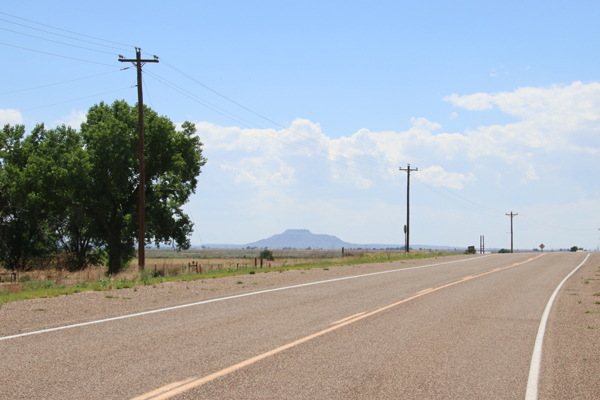Western Texas – Amarillo to New Mexico
After spending two days in Amarillo, we hit the road to finish our travel across Texas to the western half of Route 66 through New Mexico, Arizona and California.
Our goal for the day was to make about 120 miles. The first 75 of those miles would take us through Texas, the last 45 miles would get us into New Mexico to Tucumcari, where we planned to spend a night in another of the iconic motels on Route 66, the Blue Swallow.
We cruised west on Route 66 out of Amarillo and the city quickly melted into the flat Texas landscape. The vast flat horizon would be punctuated only occasionally by small farm towns with their attendant grain elevators. Some of the grain elevators were newer and operational, but some had been replaced and were no longer in service, left to waste away in time.
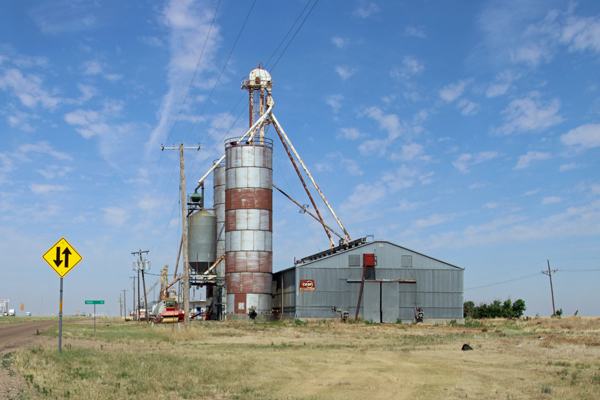
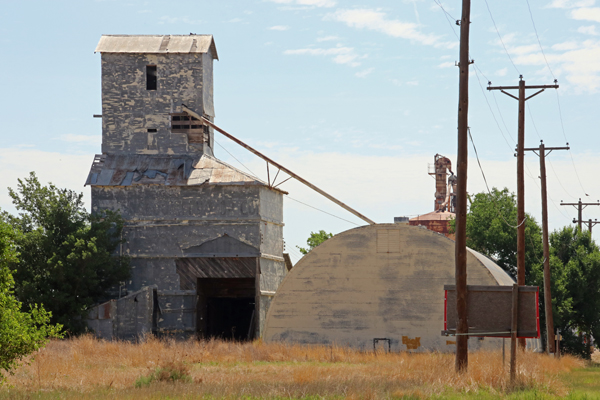
About 40 miles outside of Amarillo, we found ourselves in the small town of Vega Texas. Vega started slowly as a dusty homesteading area in the very late 1800’s and flourished in the early 1900’s as a growing town on the railroad and Old Ozark Trail. In 1915, the town won a struggle with a neighboring town to be named the county seat. This distinction led to the creation of a town square graced with a new brick county courthouse.
The small town is still anchored by the impressive courthouse, standing in the center of a shady town square, adorned with historical markers and community monuments.
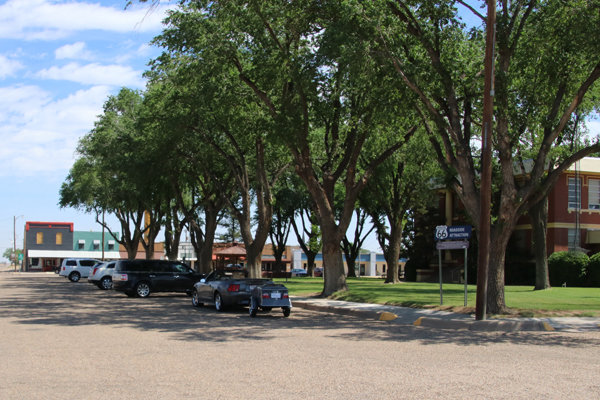
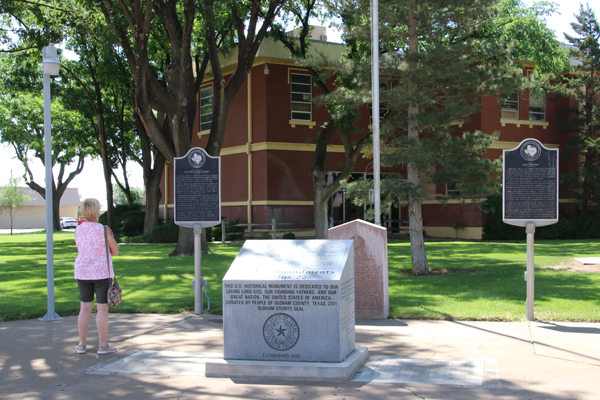
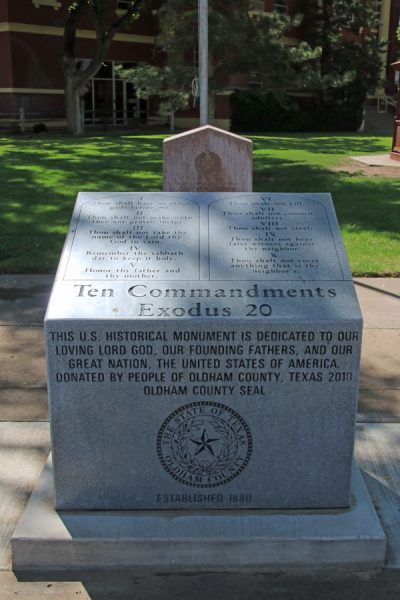
The town realized another economic boost when Route 66 was commissioned in 1926. The new highway often followed some of the early named trails (like the Old Ozark Trail that went through Vega) and the Mother Road was conveniently routed through the center of town. Vega was already bustling as a growing rail town and the addition of a major national highway added more cross-country traffic.
One remnant drawing visitors today is a restored Magnolia gasoline station that sits just adjacent to the town square. The station was built in 1924, just ahead of the highway, but then served travelers faithfully as a gas station until 1953. It was then a barbershop until 1965. The building remained empty and fell into disrepair until it was saved by the community in 2004 with help from several Texas preservation organizations and the National Park Service as a Route 66 Corridor preservation project.
Today it stands as a neat interpretive stop for travelers interested in the relationship between the Mother Road and the lives of small business owners that the road supported. The station is adorned with plaques commemorating the lives of previous owners and operators, and a brick border of bricks with names of people involved with the businesses through the years.
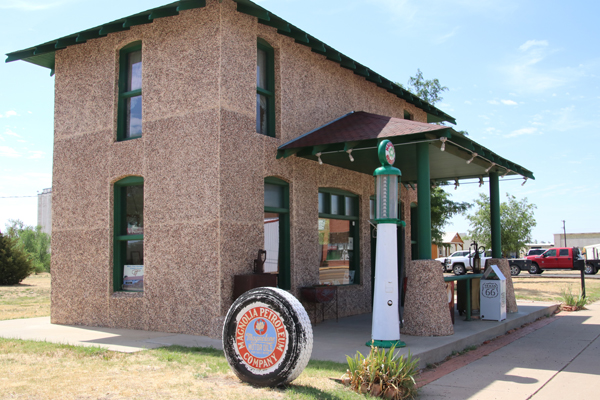
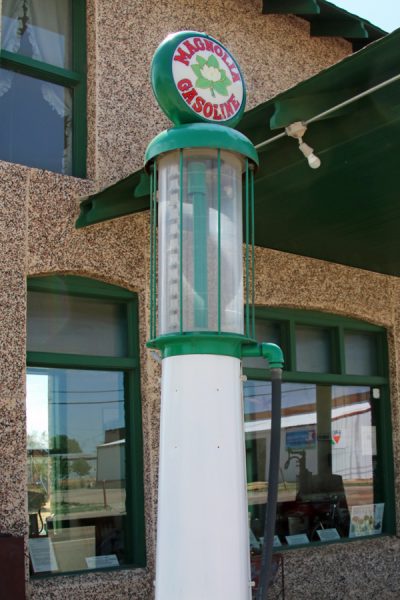
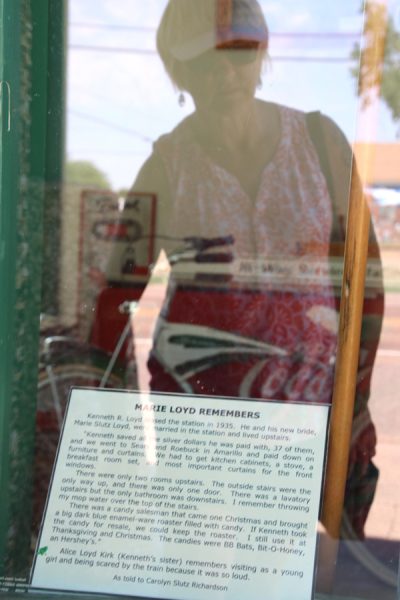
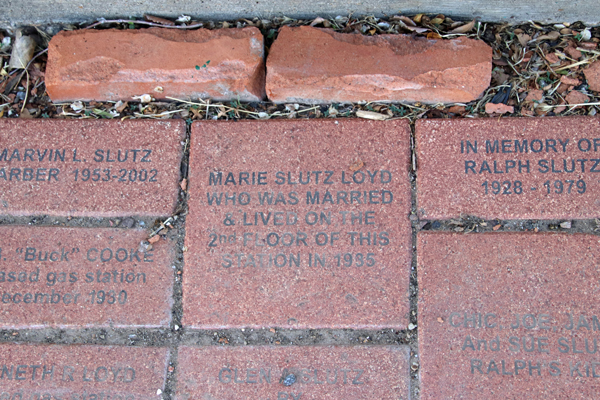
Just a half block from the square and the station, we stumbled on another interesting artifact of the town, the Milburn – Price Culture Museum. Though not specifically a Route 66 museum, the stop offers a great insight to the history and culture of the Texas Panhandle. We were impressed by the quaint collection that was curated and assembled from the donations and artifacts from local families.
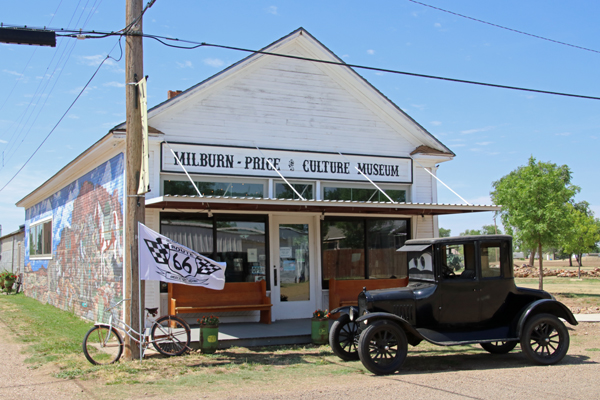
As we walked up to the museum, the woman hosting the museum came out to greet us and invited us to come in an look around. Before we went in, though, she suggested a photo op by sitting in the restored Model T that was prominently parked in front of the museum.
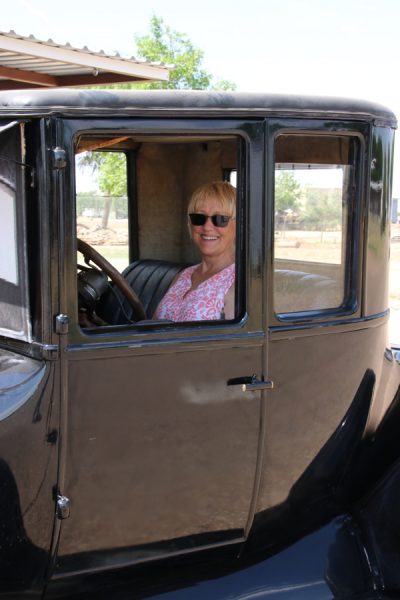
We spent quite a while browsing through the artifacts in the museum. Included were a working printing press from the original county newspaper, a circular storage cabinet for hardware from the old hardware store, a neatly restored sewing machine, and a display of old cameras that I found interesting.
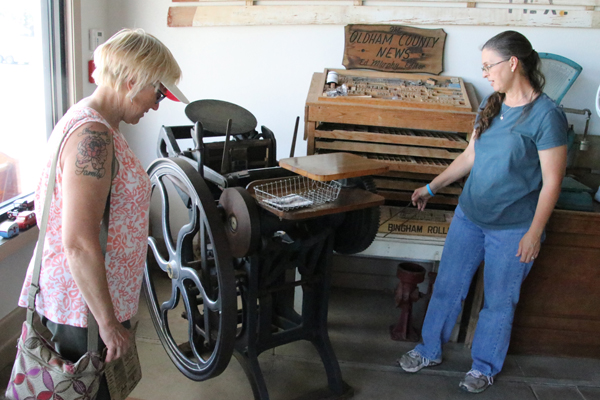
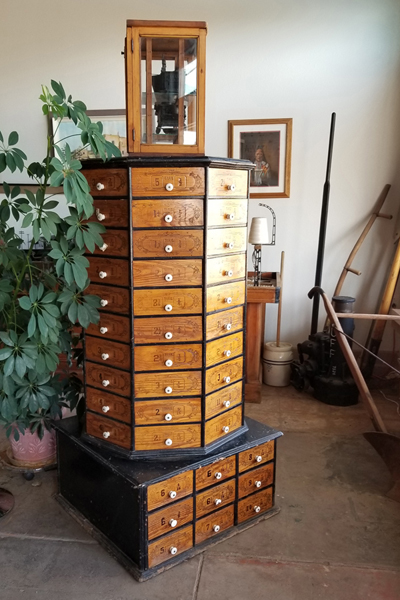
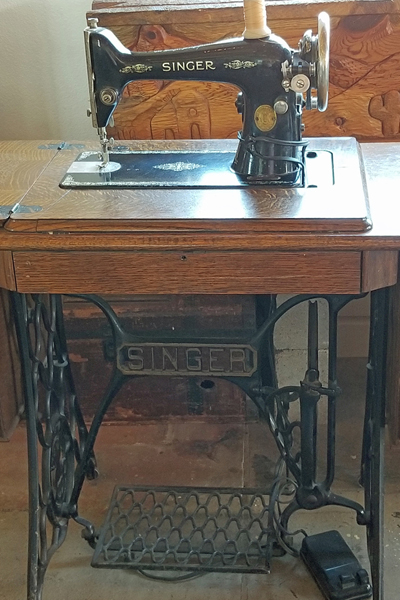
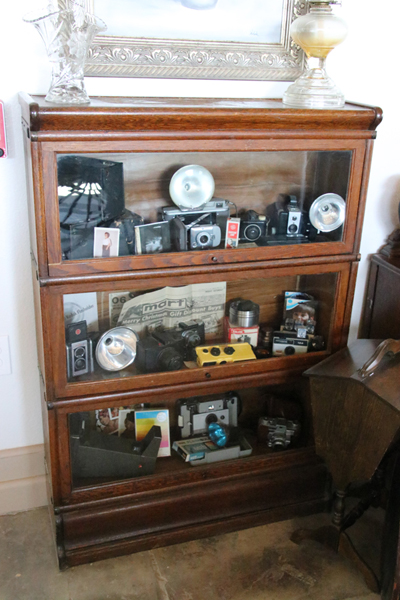
After visiting the Milburn – Price Culture Museum, we followed the old Route 66 through Vega (a whole five blocks west of the town square) before it faded on the horizon as an abandoned path.
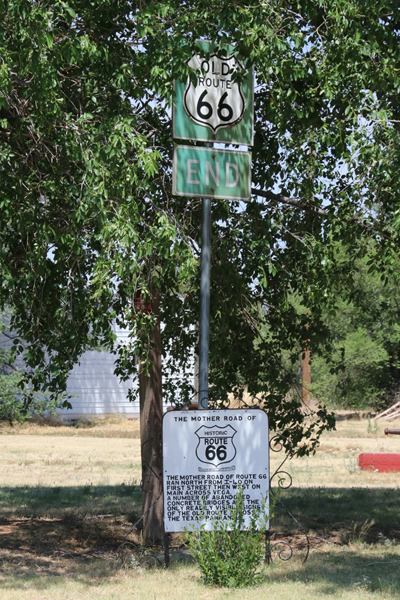
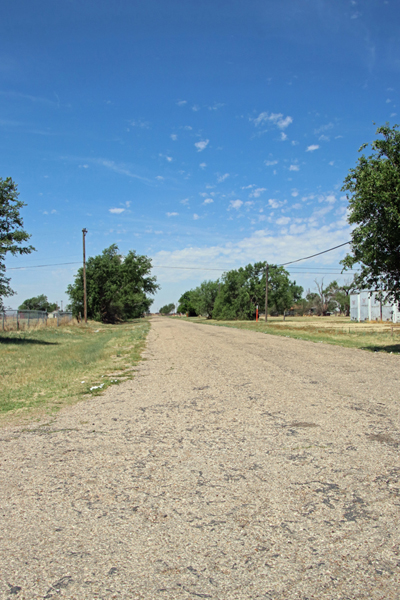
We left Vega heading south, picking up the I40 service road to go west to our next stop, about 13 miles down the road, in Adrian Texas.
With a population of 166, the very small dusty town of Adrian is not much more than home to local grain elevator and a rather impressive wind farm.
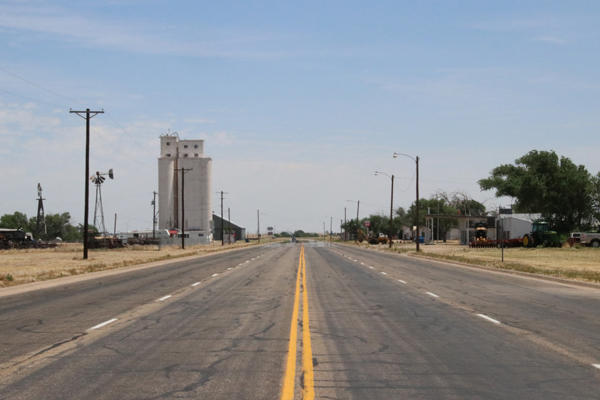
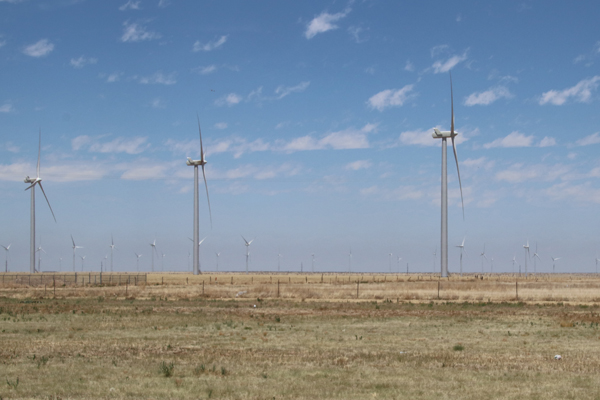
Still, the town draws heavily from the Route 66 traveler base with its claim to fame as the Midpoint of US 66, a fact prominently posted on a signpost, a line painted across the highway, and a bench adorned with a billboard sized sign.
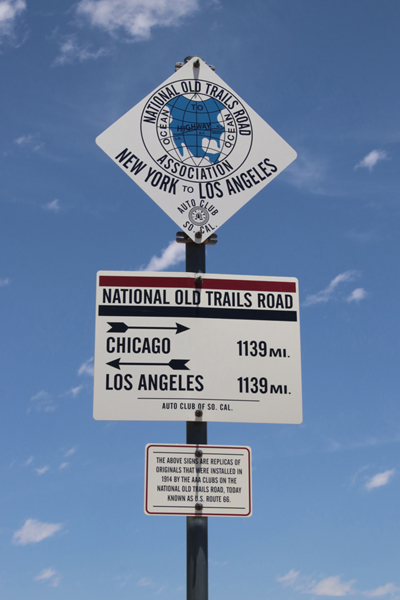
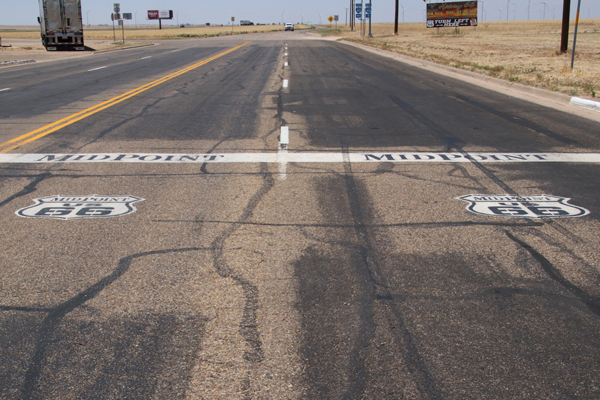
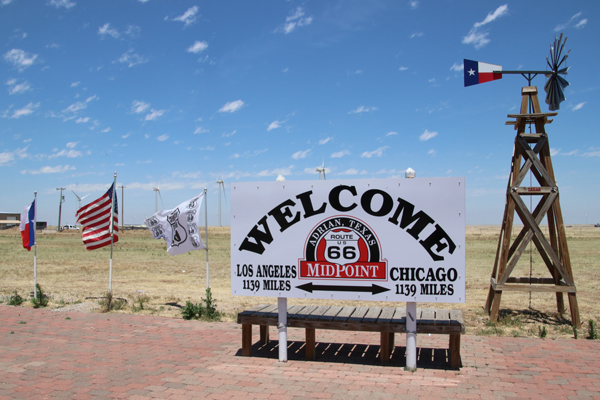
Anchoring the “midpoint” is the Midpoint Café Restaurant, built in 1928, and nestled between a motel built in 1967 and 1930’s era filling station. The café once operated 24 hours a day and is still a popular stop on the highway for it’s famous “ugly crust” pie.
The café was owned for years by Fran Houser, who inspired the character Flo in the movie Cars. Fran sold the restaurant, but still operates the adjacent station as the Sunflower Station Gift Shop.
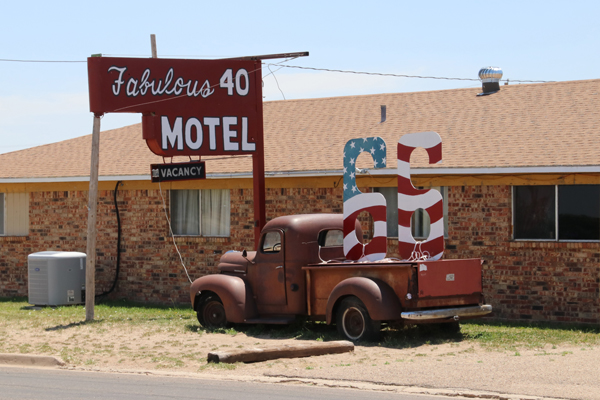
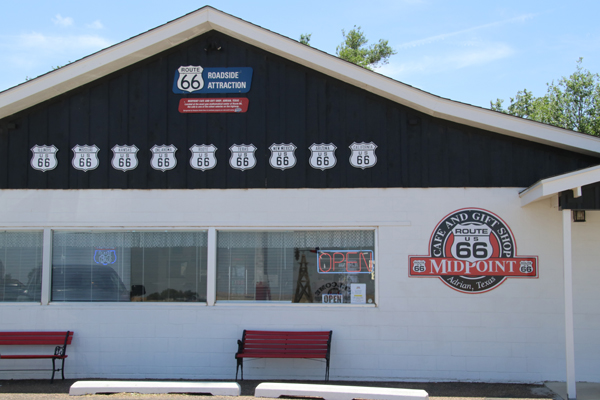
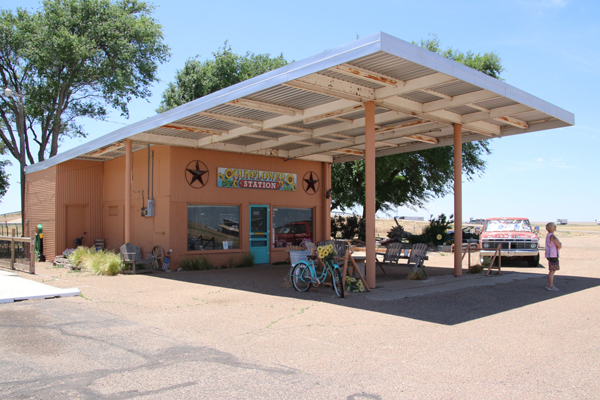
The station was closed the day we came through town, but it was still a treat to look around and especially fun to take a look at the old pickup that Fran keeps at the station for people to sign.
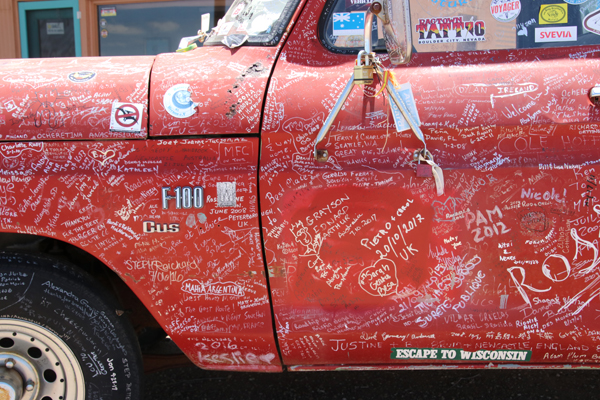
Even though the station was closed, the café was open, and we were hungry, so we stopped for lunch and a “shared” piece of their famous pie.
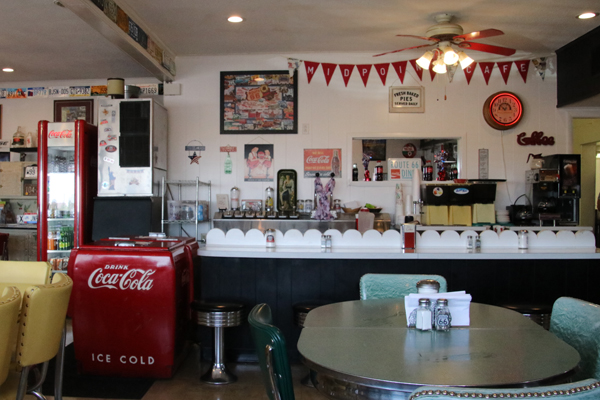
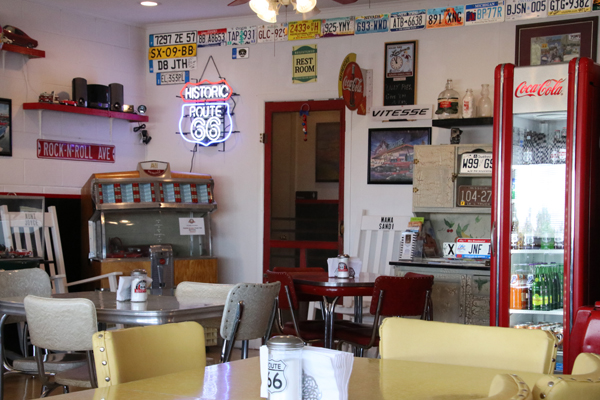
After lunch, we headed west from Adrian to explore more of Route 66. The run from Adrian to the Texas/ New Mexico state line was an uneventful 20 mile run along the interstate and more of the vast flat dusty landscape of west Texas. The original Route 66 no longer existed except as remnant dirt farm roads bordering the interstate. When we got to the last Texas exit, we pulled off the Interstate to go over the bridge to pick up a small stretch of Route 66 between Texas and New Mexico. On the bridge we took just a moment to take one last look at Texas and a peek at New Mexico.
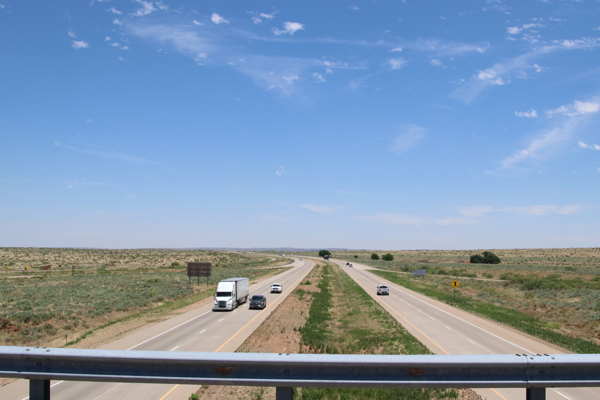
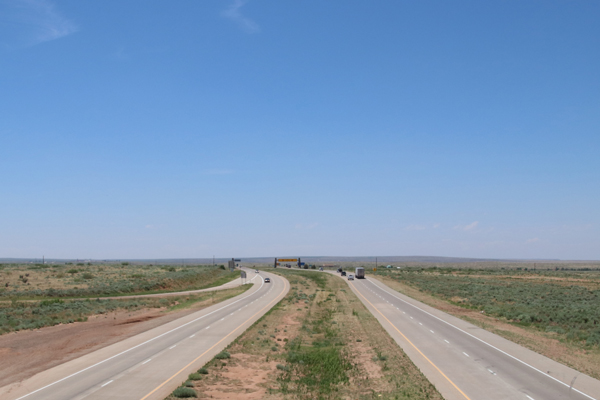
At the foot of the bridge, we turned right and headed into the small ghost town of Glenrio Texas/New Mexico on the original Route 66. Like most of the small towns along this section of the Mother Road, Glenrio was founded in 1903 as one of the way stops along the Rock Island Railroad. As the Ozark Trail Association expanded its roads through Texas around 1915, Glenrio started inviting tourists to stop for gas, refreshments, and overnight lodgings. Road traffic got heavier when the Ozark Trail was absorbed by Route 66 in 1926.
With more traffic, Glenrio, though small, became more active in the tourist trade, and the local population boomed to about 30 to 40 people in the 40’s and 50’s. Being on the border between Texas and New Mexico led to an interesting distribution of tourist businesses; gas stations tended to cluster on the Texas side of town because of the lower gas tax, while bars and some motels would tend to cluster to the New Mexico side to avoid the dry Texas county of Deaf Smith. One of the notable remnants today is the State Line Motel, with the remnants of its sign that read “Motel, Last in Texas” to travelers arriving from the east and “Motel, First in Texas” to traffic arriving from the west.
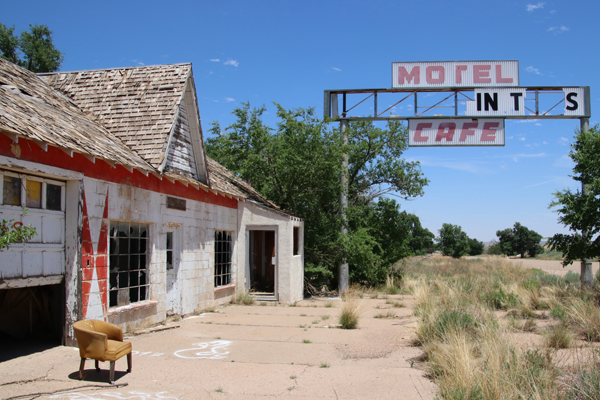
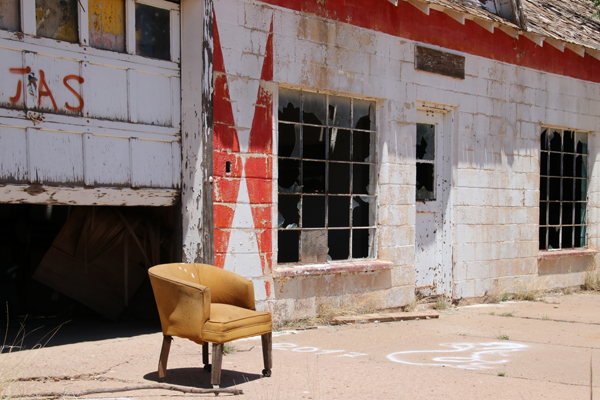
The motel is grown over and may not be the most inviting anymore but stepping back into the motor court behind the front building provides a glimpse of the shaded promenade and stately trees that offered a bit of respite from the sun. The open doors invite a peek into the rooms, no longer kept up but still showing their 1950’s décor.
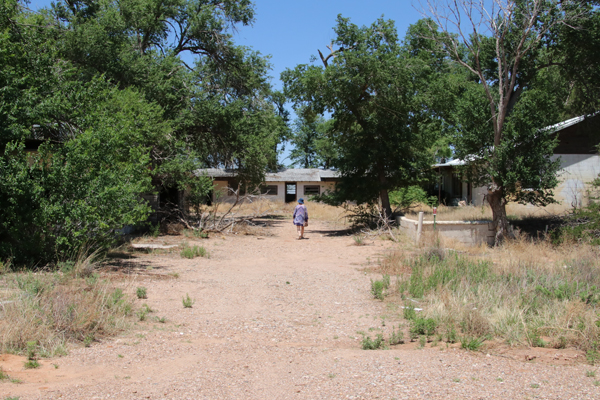
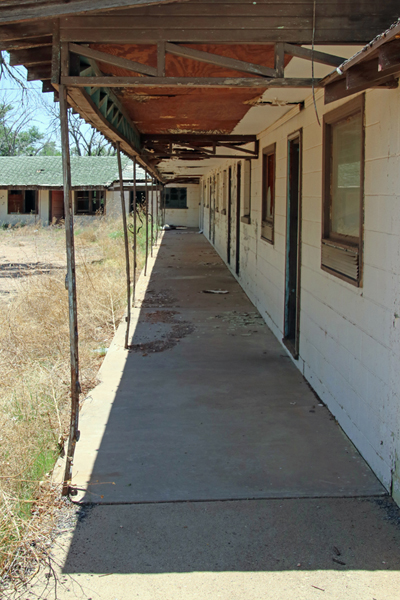
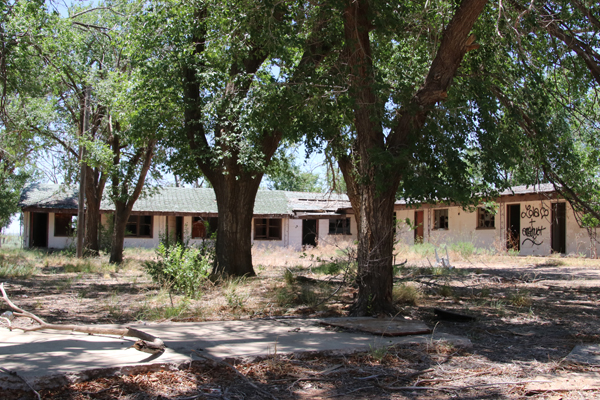
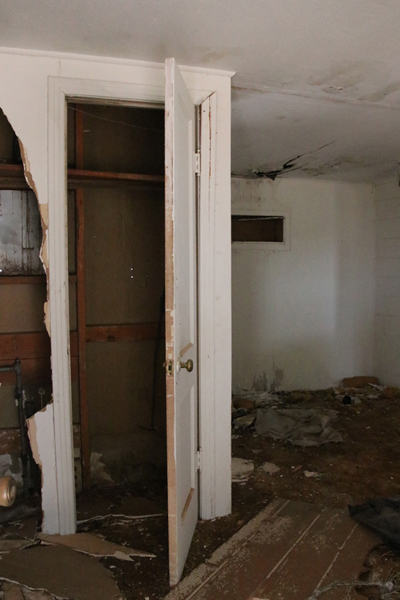
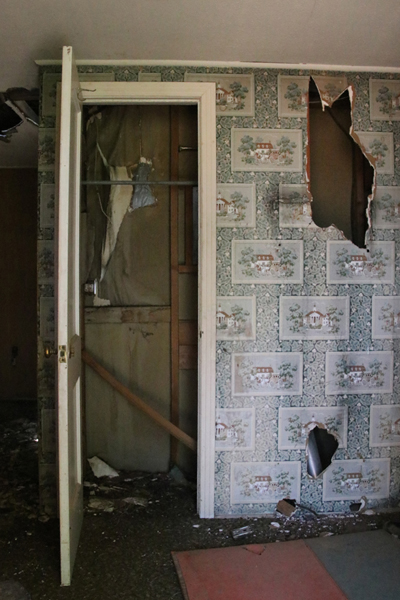
We continued slowly down the short stretch of the old highway that had been Glenrio, stopping to take in some of the other abandoned relics.
There was what appeared to be an abandoned bar or package good store (State Line Bar), clearly on the New Mexico side of town, to benefit from the more liberal New Mexico liquor laws. Nearby was an abandoned building that appeared to be a mid 20’s era station (Broyles Mobil Station), the roof collapsed, but the canopy still somewhat intact and protecting what would have been the gas pumps.
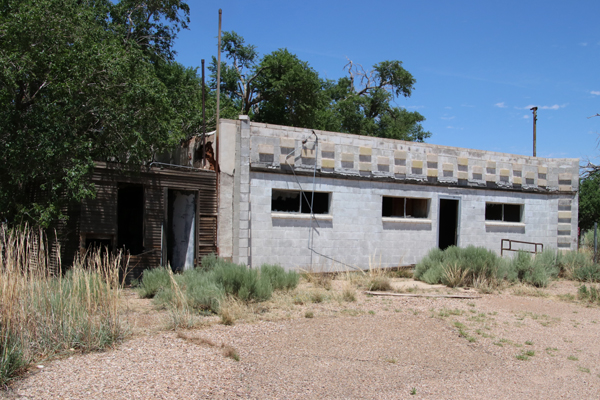
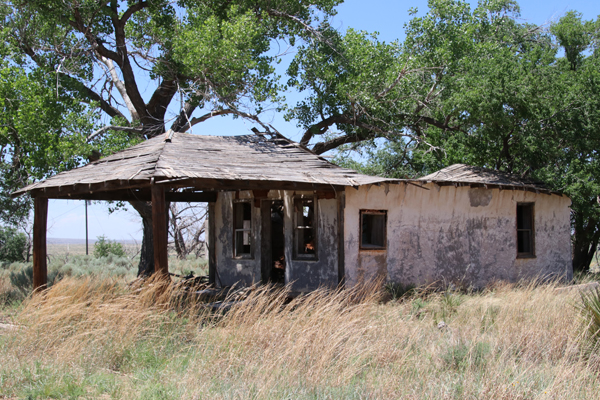
Standing close together were a 50’s era diner and gas station, both concrete block construction, but with a bit of an Art Moderne flair in their design and trim. The restaurant had been adorned with a column supporting a sheet metal neon sign, now faded but still evident.
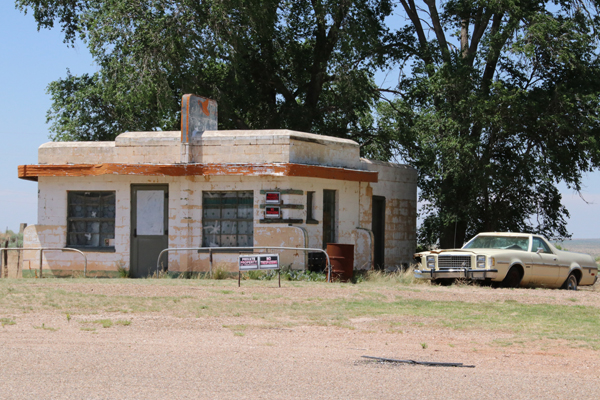
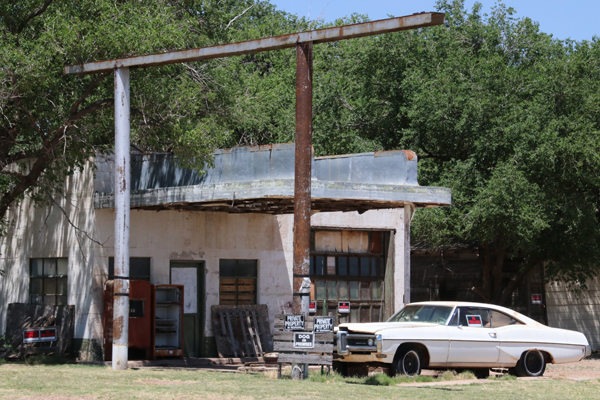
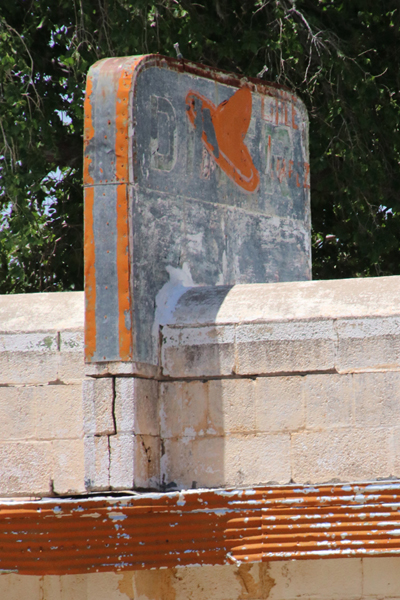
Heading down the old highway on the New Mexico side of town, the concrete curb separating the lanes on the old roadbed became apparent. Just over the slight crest in the road, however, the Mother Road turned to a gravel roadbed that disappeared on the New Mexico horizon.
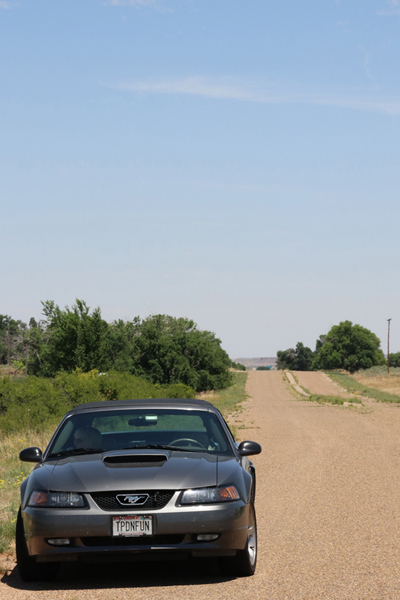
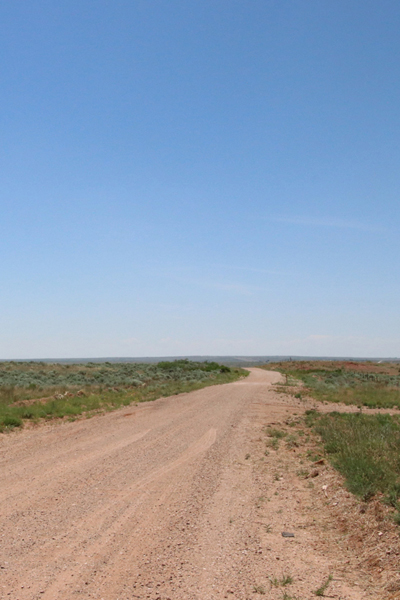
The gravel roadbed of the original Route 66 was supposedly passable, but not to us with the Mustang. We returned to the interstate and headed west into New Mexico and our planned stay for the night. At the small town of San Jon, we returned to the original Mother Road, which now pretty much follows the interstate as a frontage road. It was just a few more miles before we came to a slight curve in the road where we could see on the horizon the mountain, actually a large mesa, that was the namesake for Tucumcari New Mexico, where we planned to stay for the night.
